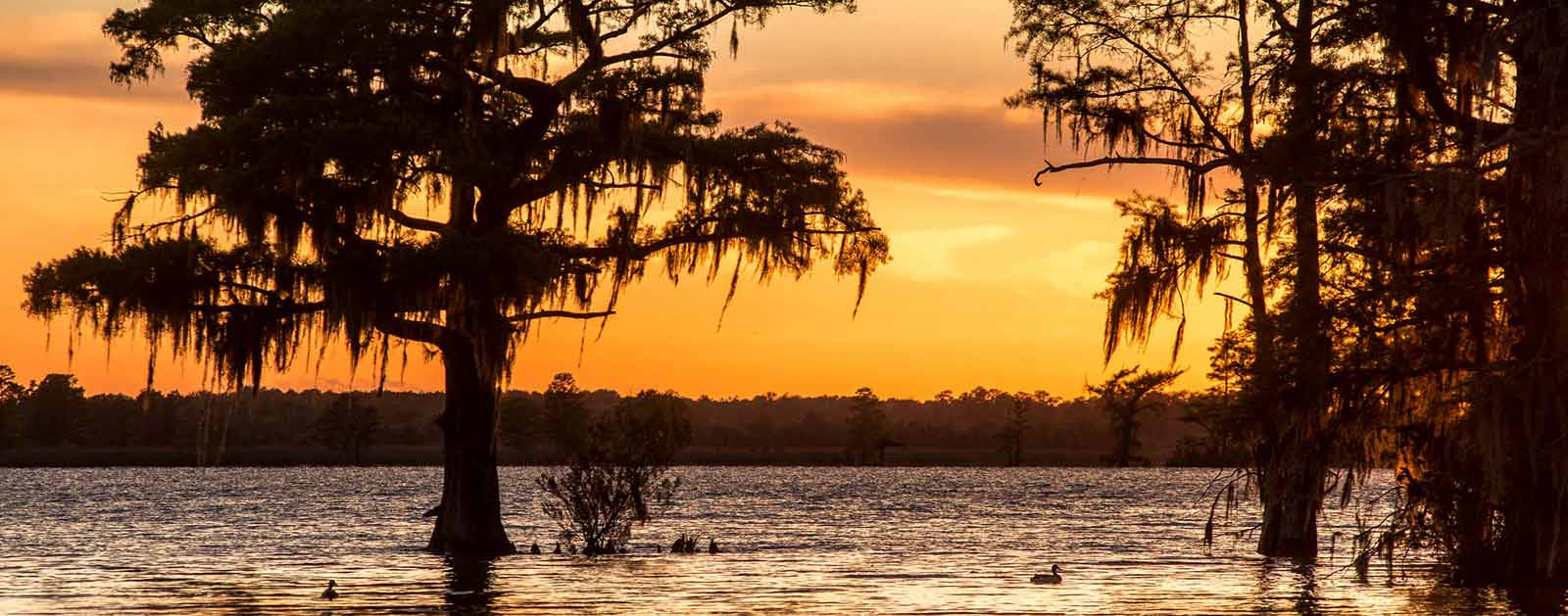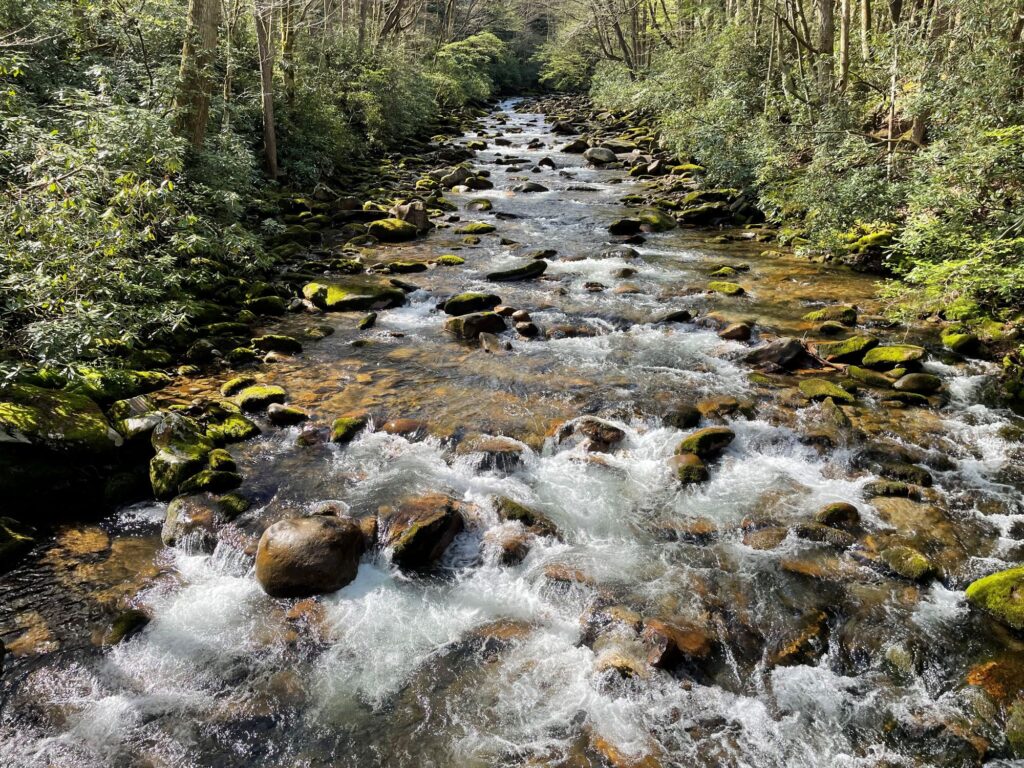Neuse River
RIVER OF PEACE

The Neuse—derived from the Native American Neusiok tribe and translating to “peace”—is an excellent river to experience. Linking North Carolina’s original capital city of New Bern to its current capital of Raleigh, the Neuse River serves as a 250-mile connection between past and future—and the Piedmont and Pamlico Sound. A lot can happen over that kind of distance.
The action gets underway at the headwaters, where the dynamic community of Raleigh-Durham remains one of the fastest growing regions in the nation. Roughly 2.5 million people live within the river basin, most of them on this upper end. The Flat and Eno Rivers merge to form the Neuse River under Falls Lake Reservoir, Raleigh’s primary water supply, which spans more than 12,000 acres and also provides some structural flood control in the basin. The removal of the antiquated Milburnie Dam in the fall of 2017 allowed the unbridled river to glide from Falls Lake Reservoir all the way to the Atlantic, making it one of the longest free-flowing rivers in the Southeast.
The Neuse River Greenway Trail winds through wetlands on a boardwalk and courses alongside the river as Raleigh’s contribution to the state’s Mountains-to-Sea Trail that runs from the Great Smoky Mountains to the Outer Banks. In 2020 the Neuse River Blueway was launched creating a interconnected network of paddle and walking trails. About halfway between Raleigh and the river mouth, the Cliffs of the Neuse rise up as an impressive 100-foot canyon within the coastal plain at Seven Springs. Hiking trails at the surrounding state park explore the riverside habitats and their mature forests and lead to some quiet fishing spots along the waterway.
Did You know?
The Neuse is the longest river contained entirely within North Carolina.
The Neuse is considered one of the widest rivers in the U.S. Six nautical miles across at its widest point, it averages more than three miles in width between the Intracoastal Waterway and New Bern.
Established at the river mouth in 1710, New Bern is the first capitol of the state of North Carolina.
At an estimated 2 million years old, the Neuse is one of the oldest rivers in the U.S. Archeological evidence shows that humans settled around the Neuse some 14,000 years ago.
What states does the river cross?
North Carolina

The plot thickens near the mouth of the Neuse, where the river changes to slow-moving estuary habitat before joining the Tar and Pamlico Rivers in Pamlico Sound. Easily explored by kayak, canoe or SUP, the estuary is home to a wide variety of coastal game fish as well as birds, oysters, and countless other species. Dolphins and alligators are seen regularly in the estuary, and sharks and manatees occasionally appear as far upriver as New Bern, about 35 miles from the Atlantic.
The Neuse has an excellent striper run, and is home to several species of fish that split their time between the ocean and freshwater, like shad, herring, and American eel. Many endangered species including the Carolina madtom (a freshwater catfish), Tar River spinymussel, piping plover, dwarf wedge mussel, and loggerhead turtle remain in the Neuse River basin. The Neuse is also home to vital populations of blue crab and oysters.
The Backstory
The Neuse has suffered from municipal and agricultural pollution issues for decades now, prompting its listing as one of America’s Most Endangered Rivers® in 2007 after multiple nominations. Currently, the river is plagued by excessive nitrogen and phosphorous from agricultural-wastewater and polluted-stormwater runoff from urbanized and rural areas. The impacts of climate change have also led to extreme flooding events across the watershed.
On the main stem of the river, recurring algal blooms continue to show that the controls designed to reduce excessive pollution are not meeting the needs of a balanced ecosystem. The algae can produce toxins leading to some of the largest fish kills in the nation. An estimated 150,000 fish died as a result of a low oxygen “dead zone” in the Neuse River estuary over 10 days in July, 2015.

Let's stay in touch!
We’re hard at work in the Southeast for rivers and clean water. Sign up to get the most important news affecting your water and rivers delivered right to your inbox.
Falls Lake Reservoir has a major impact on the basin. While it has been very effective at flood control, it also separates the Neuse River from its floodplain, eliminating critical habitat, reducing water quality, and impairing the river’s ability to recover from increasing droughts and floods.
In the headwaters, the amount of water flowing in the tributaries to Falls Lake Reservoir has been declining for years due to development and land use conversion, droughts, and increased water demands. Only a small amount of the reservoir is dedicated to water supply, and there is a growing awareness that Raleigh’s reliance on Falls Lake Reservoir for a clean and abundant water supply into the future is in jeopardy. Raleigh Metro is already home to 1.3 million people and growing at a rate of 2.2 percent a year. North Carolina is expected to add more than 3 million people by 2029.
The reservoir is also impaired due to excessive nitrogen and phosphorous from failing wastewater treatment plants upstream and stormwater runoff from the surrounding urbanized and rural areas in Durham, Orange, Granville, and Person County. Many of the streams flowing into the reservoir have been impacted as well and need restoration to allow them to be an asset for the communities around them.
The Future
The Neuse’s free-flowing nature from Raleigh to the Atlantic provides great opportunities for communities around the river to embrace it as a recreational and economic resource. Of the 3.5 million acres that comprise the Neuse Basin, 48,000 acres are state parks, 110,000 acres are game lands held by the Wildlife Resources Commission, and 58,000 acres are National Forest.
But the issues surrounding water quality and the water supply in the Neuse need to be solved together. The Neuse River watershed is at the center of a tangle of federal, state, and local regulations and incentives, each designed to address a specific issue without taking into account the system as a whole and the interconnections that exist between having clean water and ensuring water supplies for people and nature. A new water management system needs to be developed that reduces the silos of management existing today and relies on natural infrastructure to restore the balance of the watershed. That involves updating the management of Falls Lake Reservoir in order to meet the needs of the growing population and working to restore the floodplain to reduce downstream pollution from agricultural operations.
The basin is losing crucial elements of its natural systems—healthy streams, wetlands, forests, and floodplains—that filter clean water and provide flood protection. Major developments proposed to accommodate the projected population increase of a million new residents in the Neuse River basin will magnify the issue if steps are not taken to balance the system. American Rivers’ long-term goal is to create a comprehensive water management system within the Neuse basin that provides reliable, sustainable clean-water supplies and recreational opportunities for growing urban and rural communities while protecting and restoring the ecology of the basin.